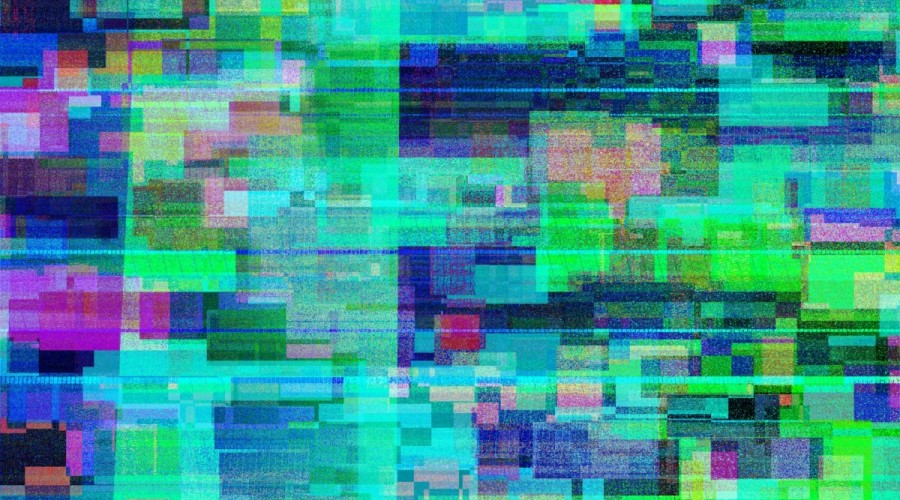
Marshall McLuhan and Cultural Studies
The Battle Royal of New Criticism
Media scholar Marshall McLuhan was one of the most famous Canadians of the twentieth century. Despite the fact that he was responsible for media becoming the subject of study that it is today, scholars working in the field of Cultural Studies have yet to acknowledge McLuhan’s ideas as being useful to their research. Meanwhile, Raymond Williams along with Richard Hogarth and E.P. Thompson are considered the founding fathers of Cultural Studies.1 With the arrival of the Internet in the 1990s, McLuhan’s theories on the nature of media were no longer ignored by academics, and they experienced a strong resurgence within the field of Media and Communication Studies and pop culture alike. His famous aphorisms, including “the medium is the message” and “the global village” have been retrieved by many and circulate widely. For example, a song by the band Vestibule called “The Ballad of Marshall McLuhan” plays on YouTube, Wired magazine adopted him as its “patron saint,” Ryerson University created the “McLuhan Speaks” video archive, and new media scholars Jay David Bolter and Richard Grusin have even appropriated his ideas as a springboard for their book Remediation: Understanding New Media. In order to better understand the relationship between media and culture, especially those that have occurred in post-war industrial cultures, I argue that Cultural Studies should integrate Marshall McLuhan’s “Laws of Media” into the field’s analytical tool-kit. McLuhan’s Laws of Media share many similarities with Raymond Williams “Cultural Materialism,” specifically the tripartite relationship of dominant, emergent, and residual forms of media, technology, and culture outlined in his Marxism and Literature. I discuss how generative intersections may be produced for Cultural Studies by way of critical recognition of the complementary nature of the approaches to media analysis shown in the work of McLuhan and Williams. Rudimentary scholarship has already begun on this topic. For instance, the anthology Residual Media, edited by Charles R. Acland, acknowledges both theorists and includes a nod to Williams in the title. Another result of examining the intersection between McLuhan’s and Williams’ work is the realization that Richard Hoggart and Stuart Hall’s early aspirations for the Centre for Contemporary Cultural Studies (CCCS) in Birmingham were to develop a distinctly British form of media studies quite similar to McLuhan’s.2 In this essay I examine key moments in which McLuhan and Williams’ work intersect in order to substantiate my argument that McLuhan, via his Laws of Media, should be integrated into contemporary Cultural Studies scholarship.
A brief introduction to McLuhan’s four laws of media, or “tetrad,” demonstrates their comple-mentary relationship with Williams’ work. Work on the laws began when, as Eric McLuhan writes in Laws of Media: The New Science (1988), the publisher of Understanding Media: The Extensions of Man (1964) requested an updated version of the book for the purpose of printing a tenth anniversary edition.3 Marshall, in partnership with Eric, developed the tetrad by asking, “what general, verifiable (that is, testable) statements can be made about all media?”.4 The McLuhans were surprised to find only four “laws of media,” and arranged them as the following questions:
What does it enhance or intensify?
What does it render obsolete or displace?
What does it retrieve that was previously obsolesced?
What does it produce or become when pressed to an extreme?5
Hence the components of the “tetrad”: enhance, obsolesce, retrieve, reverse. Janine Marchessault describes McLuhan’s tetrad as a “pedagogical framework through which to get a hold of and understand the properties of ever-changing mediascapes.”6 Simply put, the tetrad is an operative model that can be used as a heuristic tool to create dialogue or stimulate narrative with which to enhance human understanding of any human extension, or artefact.7 Eric McLuhan explains that tetrads apply only to human artefacts, “they break down when applied to natural or animal products.”8 What is most surprising about the tetrad is that it applies to all human artefacts, not just media, including physical objects like cars, planes, radios, spoons, satellites, as well as theories, laws of science, music, medicines, figures of speech, and even the tetrads themselves.9
Motivated by the many critics who called Understanding Media unscientific, McLuhan would spend the last years of his life revising his self-styled “mosaic approach” to media studies. The components of the tetrad were already present within McLuhan’s so-called mosaic scholarship: all he had to do was compile their instances from his oeuvre and set them in action.10 Understanding Media featured clear examples of extension and obsolescence, as well as reversal. Take Today: The Executive as Drop Out (1972) was a book entirely about reversal, and From Cliché to Archetype (1970) focused on obsolescence and retrieval.11 While Paul Grosswiller downplays McLuhan’s scientific aspirations in his introduction to Transforming McLuhan: Cultural, Critical, and Postmodern Perspectives, the tetradric approach to media analysis does fulfill one of two great criteria demanded of any law of science—it can be verified and tested by anyone.12 In this spirit, the McLuhans set their challenge, “can you find a situation where the laws do not work, and can you possibly find a fifth law?”.13 To date, only the four laws mentioned have been found to work with this method, a fifth has not been found, and all attempts to scientifically disprove or falsify the hypothesis have met with failure.14
Essential questions had to be asked if the McLuhans were going to develop a successful approach for analyzing media with the tetrad. When working on the revision of Understanding Media together, Eric and Marshall asked themselves “what do all media do?”.15 Three qualities inherent to all human artefacts were quickly found already to be present in the chapters that made up Understanding Media. The “extension” process, also referred to as “enhancement,” was found in the book’s subtitle. The second process, defined as “obsolescence,” is an oppositional aspect of the enhancement quality and was the basis of McLuhan’s theory that the electronic media environment was displacing the dominance of the printed word.16 The third process of “reversal” was part of chapter three’s title, “The Reversal of the Overheated Medium.” A fourth process called “retrieval” was later found in From Cliché to Archetype.17 When placed together as questions, these four qualities identified by the McLuhans would serve as the foundation of Marshall’s tetradic method of media analysis. Marshall first published these new ideas in a short letter to the editor of the journal Technology and Culture in January of 1975 under the title “McLuhan’s Laws of the Media.” By the mid 1970s McLuhan had also begun experimenting with the inclusion of his media laws in his many lectures, presentations, and public appearances.
As early as 1974 McLuhan’s new approach to media analysis was making its way into his lectures. McLuhan offers this summary of The Laws of Media in a lecture he gave that year, “Living at the Speed of Light,” reprinted in Understanding Me: Lectures and Interviews:
every medium exaggerates some function. Spectacles exaggerate or enlarge or enhance the visual function; they obsolesce another function; they retrieve a much older function; and they flip into the opposite form. The simplest form I know to illustrate this principle, which works for all media, whether it’s a teaspoon, corset, or motor car, is money. Money increases transactions; it obsolesces barter; it retrieves potlatch or conspicuous waste; and it flips into credit cards, which is no money at all.18
The title reflects his observation that the electric world is a world of simultaneity, essentially a world where everything is in flux, where everything is always changing, and thanks to television the next medium may even be an extension of consciousness.19 To better understand the changes that come along with media innovation, McLuhan defines his method as “transformation theory”: he wants to know what writing did to the people who invented and used it, and is concerned with the effect that contemporary media have on the people who use them.20 In an attempt to answer his own question, McLuhan urges, “we now have to confront the need for an ecology of media themselves . . . not just [the] raw materials, but the man-made materials too.”21 Lance Strate, commenting on studying media qua media writes, “innovations have consequen- ces, and while some consequences may be desirable, others may be undesirable.”22 It is for this reason that the field of Media Ecology has integrated McLuhan’s maxim “the medium is the message” into its praxis. By focusing on the medium, rather than the content, an alternative context emerges. There are consequences when any emerging medium collides with the firmly established dominant media—some outcomes are predictable and some are not. The tetrad, proposed by McLuhan as a method of “transformation theory,” can therefore help anticipate possible outcomes of the collision between new and old media.
Media dynamics, like money, are transactional, which is another way of saying, “we shape our tools and thereafter they shape us,” as McLuhan often repeated in his writings and lectures.23 Enhancement can also be thought of as amplification or extension. For example, the motor car increases (amplifies) the speed of travel and extends the boundaries of locality. Pushed to its extreme, a freeway full of cars can flip into gridlock, reversing into speeds that are slower than walking. Foot traffic and bicycles, once dominant modes of urban transportation have been engineered out of urban planning, obsolesced by the motor car. It is suggestive for the understanding of such media relationships that the English countryside and the Canadian prairies would coalesce in the spatial theories developed by McLuhan as well as in Williams’ writings on locality and community.24
Marshall McLuhan and Raymond Williams have a shared background—a Cambridge education. They both pursued English literary studies and were highly influenced by professors I.A. Richards and F.R. Leavis.25 The New Criticism, as taught by Richards and Leavis, presented innovative ways to integrate the study of cultural history, folk songs, and advertising, with literary texts.26 Cambridge also introduced McLuhan to the writings of James Joyce, whose experimentation with language would inspire his endless study of the interfaces between oral, literate, and electric forms of communication.27 Leavis and Richards influenced all of McLuhan’s writings on media—McLuhan’s books were written as popular guides designed to foster media literacy of the present culture in the same style of Leavis’s Culture and Environment.28 Paul Jones has noted that Leavis was equally influential for Raymond Williams, suggesting that Williams wrote his first book Reading and Criticism (1950) as an emulation of Culture and Environment.29 Their shared experience with New Criticism at Cambridge contributed to McLuhan and Williams’ status as public intellectuals in their respective countries—Williams’ Communications was written quite plainly to address an audience of Leavisite school teachers;30 McLuhan openly acknowledged the influence of Leavis on The Mechanical Bride.31 While pursuing similar objects of study across their careers, however, McLuhan and Williams often expressed their resonating theories in dissonant tones.
The first point of intersection in which McLuhan and Williams meet in print is McLuhan’s second book, The Gutenberg Galaxy: The Making of Typographic Man (1962). In a paragraph following his sweeping statement that television will usher in a revolution in human perception, McLuhan quotes directly from Williams’ Culture and Society, 1780-1850 (1957): “changes in convention only occur when there are radical changes in the general structure of feeling” and “while in one sense the market was specializing the artist, artists themselves were seeking to generalize their skills into the common property of imaginative truth.”32 Williams followed with a review of The Gutenberg Galaxy in 1964, initially titled “A Structure of Insights.” The review would later be published in McLuhan: Hot & Cool (1967) with a new title: “Paradoxically, If the Book Works it to Some Extent Annihilates Itself.” Williams’ new title, an excerpt from the review itself, was likely chosen by the editor of McLuhan: Hot & Cool, G.E. Stearn, in order to highlight the reversal theme that was the content of chapter three in Understanding Media.
Although Williams admits that he had a curious reluctance to write about The Gutenberg Galaxy, he had no doubt of the book’s importance, and insists that it is necessary to “let the book’s substance sink into the mind.”33 Williams also indicates that he is looking forward to McLuhan’s next book, saying: “McLuhan’s discussion of the ending of print-culture, and his insights into the quite new configurations now being lived through, entitle us to look forward with exceptional interest to the analysis of these changes which he has promised for a forthcoming book [Understanding Media].”34 Williams “exceptional interest” in McLuhan’s Understanding Media, would turn to disappointment, however, resulting in a scathing critique of McLuhan published in Television: Technology, and Cultural Form (1974). Nick Stevenson identifies Williams’ 1974 critique of McLuhan as a major source for the resistance to his thinking within Cultural Studies.35 McLuhan fired back at Williams with a review of Television: Technology, and Cultural Form, published in the journal Technology and Culture in 1978. In his review, McLuhan pointed out that Williams was forced to admit by his own words that “it is ironic to have to say, finally, that one of the innovating forms of television is television itself.”36 McLuhan implies that Williams has to come to terms with the possibility that the medium is indeed the message. Television is novel because it is television, and according to McLuhan’s “transformation theory,” “the TV image uses the eye as an ear.”37 Considering the influence of New Criticism on both McLuhan and Williams, it makes sense that they would look at the same media and have similar but different opinions upon further analysis, each of them modified New Criticism by adapting close reading of texts to fields other than literature. A perfect example can be found by comparing McLuhan’s 1952 essay “Advertising as a Magical Institution” with Williams’ 1960 essay, “Advertising: The Magic System.” In each of these papers, both McLuhan and Williams associate magic and power with advertising, and each of them highlight the role shamanism played within simpler societies. It is perhaps unsurprising, then, that Williams would formulate a complementary concept to McLuhan’s tetrad—the triadic dominant, emergent, residual—with applications for media and cultural analysis, first in his 1973 essay “Base and Superstructure in Marxist Cultural Theory,” and next, in chapter eight of Marxism and Literature (1977).
I will focus on chapter eight of Marxism and Literature as it is the more polished example of Williams’ triadic concept of dominant, emergent, and residual, first introduced in his 1973 essay. Historical analysis, according to Williams, starts by carving out epochs from history and studying them in isolation. This method is effective in practice, as it serves to identify the dominant features associated with an epoch, but if the complex interrelations between past and future are to be understood, it is necessary to evaluate the entire cultural process rather than just the dominant feature.38 By exploring the residual and emergent in any real process, new insights can reveal the dominant in a new light.39 By “residual” Williams means to identify those elements of a contemporary culture’s past that are still present in some shape or form as residue, or that they reflect an effective element of the present.40 Williams’ notion of the “residual” echoes McLuhan’s “obsolescence” law of media as may be observed by Williams when he states that, “it is crucial to distinguish this aspect of the residual, which may have an alternative or even oppositional relation to the dominant.”41 McLuhan makes a distinction between obsolescence and obsolete. McLuhan identifies the medium of the book as an example of an obsolesced medium that has not been rendered obsolete by the arrival of Xerox technology, explaining that the emerging use of photocopiers does not usher in an end to the book: rather it changes the scope of the book’s function, and thus the book becomes a residual medium.42 By “emergent,” Williams seeks to identify new meanings and values, as well as new practices created by emergent cultural phenomena, such as any new medium. He writes, “we are always considering relations within in a cultural process, definitions of the emergent, as of the residual, can be made only in relation to a full sense of the dominant.”43 The dominant defines what is currently ubiquitous and deeply integrated into culture. McLuhan provides a useful example of the dominant by identifying three distinct communication eras based on the dominant modes of communication available: speech defines the tribal era, writing defines the scribal era, and mechanical printing defines the age of print.44
The juxtaposition of Williams’ “keywords” dominant, emergent, and residual with McLuhan’s four laws of media—the enhance, obsolesce, retrieve, and reversal of the tetrad—illuminates a site of possible generative intersectionality between their respective work on culture, media, and technology. If Williams is considered a founding father of Cultural Studies, then surely McLuhan has a place within the contemporary study of media as construed by the field of Cultural Studies. The influence of New Criticism is prevalent across both Williams and McLuhan’s respective oeuvres, indicating shared foundation and perspective in their analysis of culture and media. Speculating on the future of Cultural Studies, Williams hopes that the “syllabus” can be revised to include changes that are representative of the fields’ best intellectual work in order to present it to those people “for whom it is not a way of life.”45 At present McLuhan’s tetradic laws of media are not a way of life for those working in Cultural Studies, but in the future that may not be the case.
Citation:
Cole, Jarrett. “Marshall McLuhan and Cultural Studies: The Battle Royal of New Criticism.” Winnsox, vol. 1 (2020).
ISSN 2563-2221



